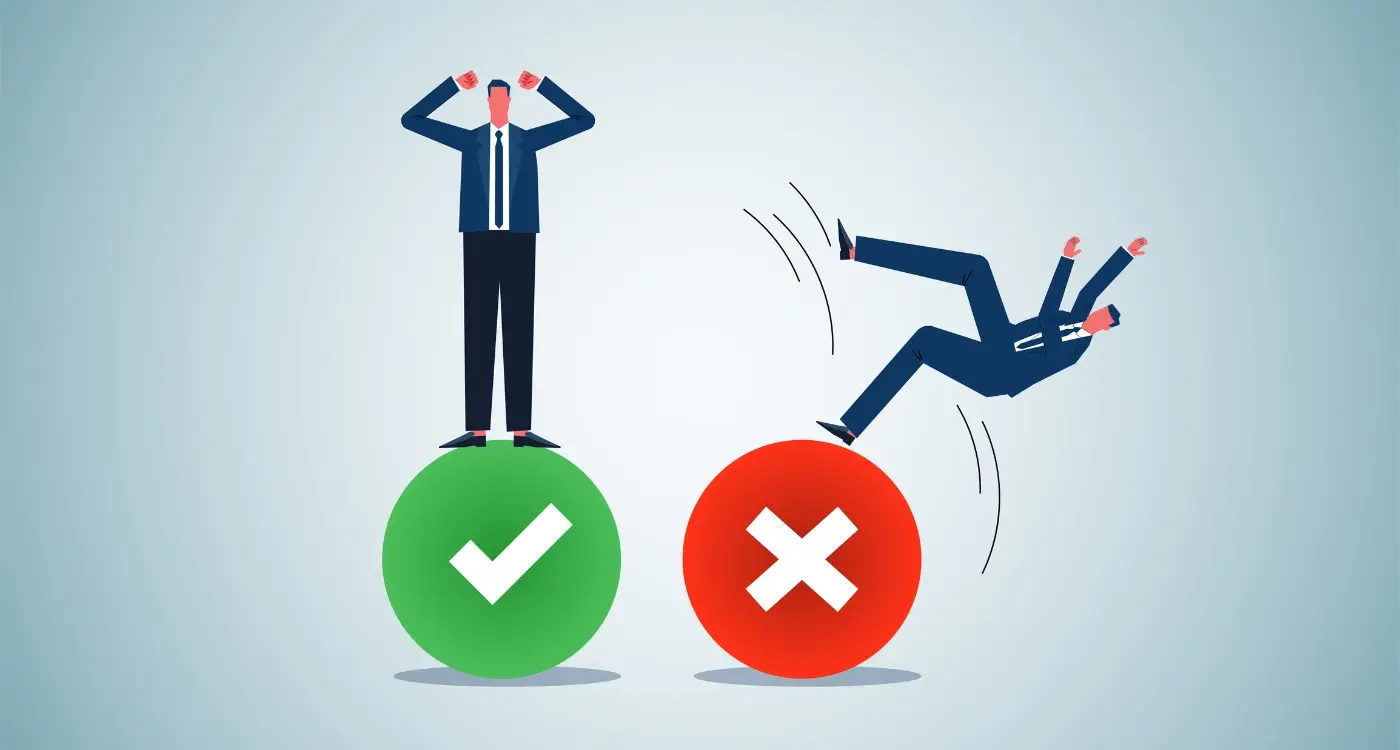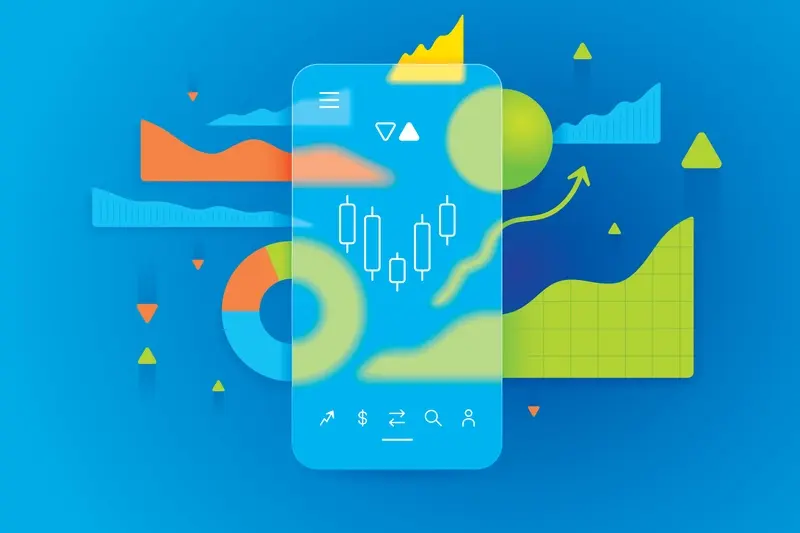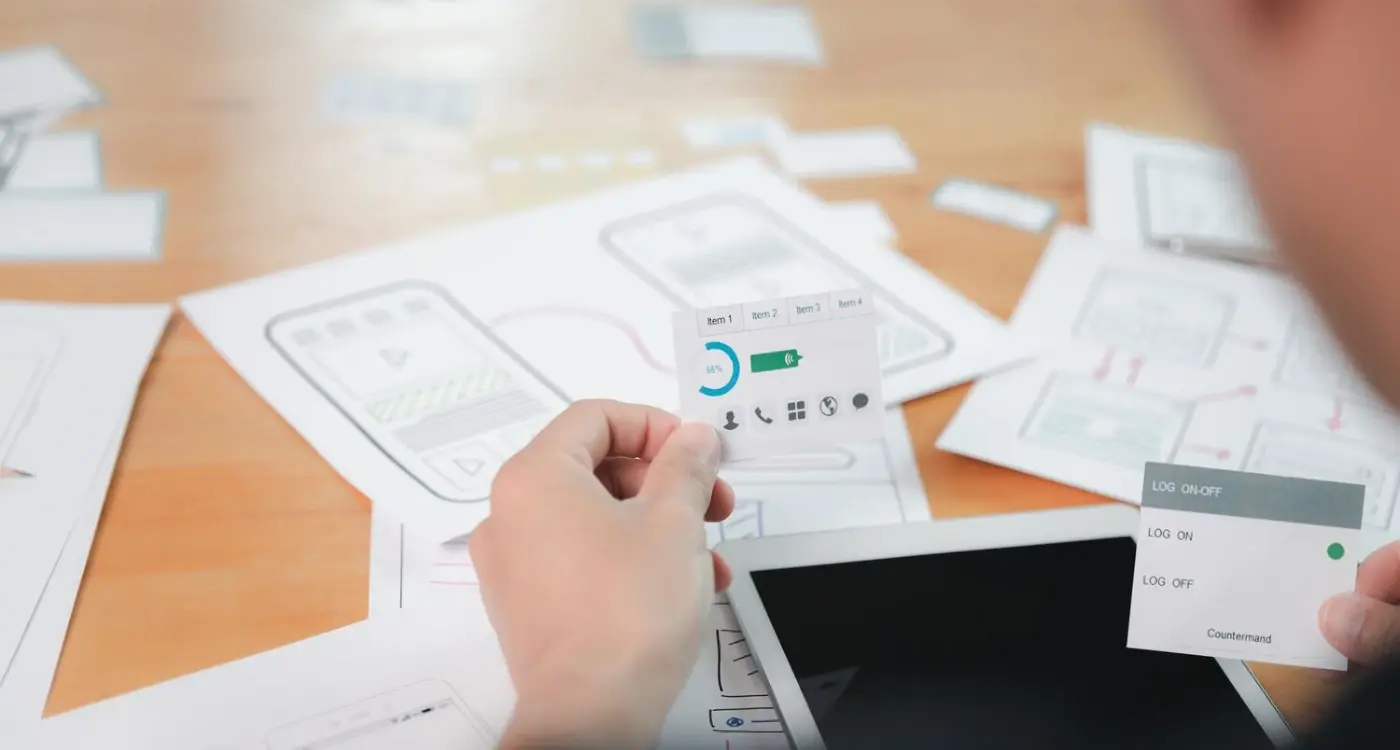Which Apps Should Use Games and Which Ones Shouldn't?
Business owners everywhere are adding game elements to their apps without thinking it through properly. Points, badges, leaderboards—they're slapping them onto everything from productivity tools to banking apps because someone told them it would boost engagement. The result? Apps that feel gimmicky, confuse users, and sometimes make simple tasks unnecessarily complicated.
I've seen this play out countless times over the years. A client comes to us convinced they need gamification because their competitor has it, or they read an article about how some fitness app increased user retention by 40% with badges. But here's what they don't realise—gamification isn't a magic solution you can sprinkle on any app. It needs to make sense for your users and your business goals.
The biggest mistake I see is treating gamification like seasoning—thinking you can just add a pinch here and there to make everything taste better
Some apps genuinely benefit from game mechanics. Educational apps, fitness trackers, and habit-building tools often work brilliantly with points and progress bars because the game elements align with what users are trying to achieve. But stick those same elements into a banking app or a project management tool? You might actually make the experience worse.
The key is understanding when gamification serves your users versus when it just serves your ego. Getting this decision right early on can save you thousands in development costs and prevent you from building something your users will find annoying rather than engaging. That's exactly what we're going to work through together.
Right, let's get straight to the point. Gamification isn't just about adding points and badges to your app and calling it a day—that's honestly one of the biggest mistakes I see business owners make. It's actually about understanding what makes people tick and using game-like elements to encourage specific behaviours.
When I talk about gamification in business apps, I mean taking the psychological triggers that make games addictive and applying them to real-world tasks. Progress bars, achievement systems, leaderboards, challenges—these aren't just fun extras, they tap into basic human psychology. We're naturally wired to seek progress, compete with others, and feel accomplished when we complete tasks.
The Psychology Behind Why It Works
Here's the thing though—it only works when its genuine. Users aren't stupid; they can spot forced gamification from a mile away. The best implementations feel natural, like they belong in the app. A fitness app with step challenges? Makes perfect sense. A banking app with badges for checking your balance? That just feels weird and desperate.
The key is understanding your users motivation. Are they trying to build habits? Learn something new? Stay motivated? Or are they just trying to get a job done quickly? If its the latter, adding game elements might actually slow them down and annoy them. I've seen productivity apps fail because they added so many achievement systems that users couldn't focus on their actual work.
What works is subtle progress indicators, clear goals, and maybe some social elements if they fit naturally. The gamification should support your app's core purpose, not distract from it. When done right, users don't even notice the game mechanics—they just feel more engaged with your app.
Which Types of Apps Benefit Most from Game Elements
After working with dozens of different app types over the years, I've noticed some clear patterns about when to gamify and when not to. It's not just about slapping badges on everything and hoping for the best—certain app categories naturally lend themselves to game mechanics whilst others really don't.
Fitness and health apps are absolute goldmines for game elements. Think about it: users already have clear goals (lose weight, run faster, sleep better), they need motivation to stick with habits, and progress is measurable. I've built fitness apps where simple streak counters increased daily usage by 40%. The psychology just works because exercise already feels like a challenge.
Learning apps are another sweet spot. Whether it's language learning or professional skills, users have clear progression paths and need that extra push to keep going when things get difficult. XP points, levels, and achievement badges feel natural because learning already has built-in milestones.
Apps with clear, measurable user goals work best with game mechanics. If your users are trying to achieve something specific over time, gamification can provide the motivation boost they need.
Productivity apps can work well too, but you need to be careful. Task management apps with simple completion streaks or progress bars? Great. But don't go overboard—people want to get their work done, not play around with virtual rewards.
Here are the app types that typically benefit most from game elements:
- Fitness and wellness apps (habit tracking, workout completion)
- Educational and learning platforms (skill progression, knowledge testing)
- Personal finance apps (savings goals, budget achievements)
- Social apps (community engagement, content sharing)
- Habit-forming lifestyle apps (meditation, reading, cooking)
The common thread? These apps all require repeated user actions over time to deliver value. Game mechanics help bridge the gap between initial enthusiasm and long-term habit formation—which is exactly when app suitability for gamification becomes most important.
Industries Where Gamification Creates Real Value
After working with apps across dozens of industries, I can tell you that gamification isn't some magic fix that works everywhere. Some sectors are just naturally suited to game elements, while others—well, lets just say I've seen some pretty awkward attempts that missed the mark completely.
Healthcare apps are absolute goldmines for gamification. Think about it: you're asking people to change ingrained habits, take medication daily, or exercise more. That's hard work! I've built apps that turn physiotherapy into daily challenges, medication adherence into streak-building games, and fitness goals into social competitions. One diabetes management app we developed used points and badges to encourage blood sugar monitoring—user engagement jumped by 340% compared to the previous version.
The Natural Fits
Education apps are another winner. Language learning apps like Duolingo didn't become household names by accident—they gamified the learning process brilliantly. But here's what people get wrong: its not just about points and levels. The best educational apps use game mechanics to create genuine learning momentum and celebrate small victories along the way.
Financial apps work well too, particularly for budgeting and saving goals. I've seen apps that turn debt reduction into epic quests and savings targets into achievement unlocks. People respond to these mechanics because they make long-term financial goals feel more immediate and rewarding.
- Healthcare and fitness apps (habit formation)
- Educational platforms (progress tracking)
- Financial management tools (goal achievement)
- Productivity apps (task completion)
- Employee training platforms (skill development)
- Customer loyalty programmes (repeat engagement)
The key is matching game elements to natural human motivations. When there's already an intrinsic desire to improve, learn, or achieve something, gamification can provide that extra push to keep people engaged during the inevitable rough patches.
When Game Mechanics Can Actually Hurt Your App
I've seen plenty of apps where gamification was added because someone thought it would be "fun" or "engaging"—without considering whether it actually made sense for their users. And honestly? Sometimes adding game elements can backfire spectacularly.
Banking apps are a perfect example of where gamification can go wrong. When you're checking your account balance or transferring money, you want speed and clarity. The last thing you need is badges popping up congratulating you on your third login this week. It feels patronising and undermines the serious nature of managing your finances. Your users aren't there to play—they're there to get stuff done.
When Gamification Feels Forced
Medical apps face similar issues. If you're tracking symptoms or managing medication, adding points and leaderboards can trivialise genuine health concerns. I worked on a healthcare app where the client initially wanted to add achievement badges for taking medication consistently. We quickly realised this could make light of serious medical conditions and potentially create unhealthy competition around health issues that are deeply personal.
The moment your users feel manipulated rather than motivated, your gamification strategy has failed
Professional tools are another area where game mechanics often miss the mark. Accountants using tax software don't need streak counters or progress bars celebrating how many forms they've completed. They need efficiency and accuracy. Adding game elements to these workflows can slow people down and create unnecessary friction in what should be straightforward professional tasks.
The key is understanding your user's mindset when they open your app. Are they looking for entertainment and engagement, or are they trying to complete a task as quickly as possible? When you misread this fundamental motivation, even well-designed game mechanics can make your app feel childish, manipulative, or just plain annoying. Sometimes the best gamification strategy is knowing when not to use it at all.
The Cost and Complexity Reality Check
Right, let's talk about the elephant in the room—adding game features to your app isn't cheap, and it's definitely not simple. I've seen too many clients get excited about gamification without understanding what they're actually signing up for. The reality? It can easily double your development budget and timeline if you're not careful about it.
Here's what most people don't realise: every game element you add creates a ripple effect throughout your entire app. Want a points system? You'll need a database to track scores, logic to award points, a user interface to display them, and probably some kind of leaderboard. That simple "badge" feature suddenly needs icon design, achievement tracking, push notifications, and user profile integration. It adds up bloody quickly.
What Game Features Actually Cost
- Basic points system: 15-25 hours of development time
- Achievement badges: 20-35 hours (including design and backend)
- Leaderboards: 30-50 hours (with proper security measures)
- Progress bars and levels: 25-40 hours
- Social sharing features: 35-60 hours
- Complete gamification system: 150-300+ hours
And that's just the initial build. Game elements need constant monitoring and tweaking based on user behaviour. You might find that your point values are too high or too low, that achievements aren't motivating enough, or that your leaderboard is dominated by a few power users who discourage everyone else.
My advice? Start small and prove the concept works before going all-in. Add one simple game element, measure how users respond, and only then consider expanding. Your wallet (and your sanity) will thank you for taking this approach rather than building a gaming empire from day one.
Simple Game Elements That Actually Work
Right, let's get practical. After years of building apps with various game mechanics, I can tell you that the simplest elements often work the best. You don't need complex point systems or elaborate reward structures—sometimes the most effective gamification is so subtle users barely notice its there.
Progress bars are absolute gold. People love seeing how far they've come, whether that's completing their profile, finishing a course, or working through a checklist. It's psychology 101 really—we're wired to want to complete things. I've seen conversion rates jump 20-30% just by adding a simple progress indicator to onboarding flows.
The Low-Hanging Fruit
Streaks work brilliantly for habit-forming apps. Fitness trackers, language learning, even productivity tools benefit from this mechanic. The key is making the streak achievable but meaningful. Nobody wants to lose a 47-day streak because they forgot to log in once—that's just frustrating.
- Achievement badges for meaningful milestones (not everything needs a badge!)
- Simple point systems that actually reflect real value
- Completion percentages that show clear progress
- Gentle challenges that push users forward without overwhelming them
- Social proof elements like "Join 10,000+ users who've completed this"
Start with just one game element and test it thoroughly before adding more. I've seen too many apps become cluttered with points, badges, and levels that confuse rather than motivate users.
What Actually Motivates People
Here's the thing about gamification—it works best when it feels natural to your app's purpose. A fitness app with step challenges? Perfect. A banking app with points for transactions? That just feels weird and potentially trivialises serious financial decisions.
The most successful implementations I've built focus on intrinsic motivation rather than external rewards. Help users feel accomplished, show them their improvement over time, and create moments of genuine satisfaction. That's what keeps people coming back, not some arbitrary point system that means nothing in the real world.
Right, so you've added some game elements to your app. Now what? How do you actually know if they're working or if you've just added digital clutter that nobody cares about?
The metrics that matter aren't the obvious ones most people think about. Sure, downloads are nice, but they don't tell you much about whether your gamification is actually doing its job. What you really want to track is user behaviour—are people coming back more often? Are they spending longer in your app? Are they completing the actions you actually want them to complete?
The Numbers That Actually Matter
I always tell clients to focus on three key areas when measuring gamified features. First is session frequency—if your game elements are working, users should be opening your app more often than before. Not necessarily for longer sessions, but more regular ones. Second is completion rates for your core actions; if you've gamified your onboarding process, are more people finishing it? Third is what I call "voluntary engagement"—are users interacting with features they don't have to use?
Here's something most people get wrong though—they measure everything immediately. Game mechanics need time to work. The dopamine hit from earning points or badges doesn't create lasting behaviour change overnight. You need at least 30 days of data, preferably 60, before you can say whether your gamification is genuinely improving user engagement or just creating short-term novelty.
And please, don't fall into the trap of thinking more badges equals more engagement. I've seen apps with brilliant core functionality get buried under pointless achievement systems that nobody understands. Sometimes the best metric is simply asking users what they think—revolutionary concept, I know!
Planning Your App's Gamification Strategy
Right then, you've decided that gamification makes sense for your app. Now comes the tricky bit—actually planning how to do it properly. I've seen too many apps throw in badges and points without any real thought behind it, and honestly? It shows. Users aren't stupid; they can tell when you've just stuck game elements on top of your existing app like a plaster.
The first thing you need to do is map out your user journey. Where do people get stuck? Where do they give up? These friction points are where game mechanics can really shine. Maybe users abandon your fitness app after three days—that's where you might introduce streak counters or buddy challenges. If people struggle to complete their profiles, perhaps a progress bar with rewards for each section would help.
Start Small and Test Everything
Here's what I always tell my clients: don't try to gamify everything at once. Pick one core behaviour you want to encourage and build around that. Want people to log meals more consistently? Start with a simple streak system. Need users to explore more features? Try a discovery-based point system.
The best gamification feels so natural that users barely notice it's there—it just makes the app more enjoyable to use
And please, for the love of all things mobile, test with real users before you launch. What seems fun and motivating to your development team might feel patronising to your actual audience. I've watched apps lose users because their gamification felt childish or forced. Get feedback early, iterate quickly, and remember—you can always add more game elements later, but it's much harder to take them away once users expect them.
Conclusion
After eight years of building apps with and without game elements, I can tell you this—gamification isn't a magic solution that fixes everything. It's a tool, and like any tool, it works brilliantly when used in the right situation and can cause real damage when it's not.
The apps that succeed with gamification are the ones where game elements feel natural and actually help users achieve their goals. Fitness apps that celebrate your running streak? Perfect. Banking apps with badges for saving money? They can work really well. But adding points to a tax preparation app just because you think it might increase engagement? That's a recipe for confused users and wasted development budget.
Here's what I've learned works best: start simple, measure everything, and always put your user's actual needs first. A progress bar that shows how close someone is to completing their profile isn't flashy, but it gets results. A complex achievement system with seventeen different badge categories might sound impressive in a pitch meeting, but if your users don't understand it within ten seconds, it's worthless.
The mobile app world is crowded enough without adding unnecessary complexity to your user experience. Before you decide whether to add game elements to your app, ask yourself this: will this genuinely help my users accomplish what they came here to do? If the answer isn't a clear yes, save your development time and budget for features that actually matter. Your users—and your download statistics—will thank you for it.
Share this
Subscribe To Our Learning Centre
You May Also Like
These Related Guides

Which Competitor Features Should You Copy vs Avoid Completely?

What Design Trends Should I Follow (And Which Should I Avoid)?



